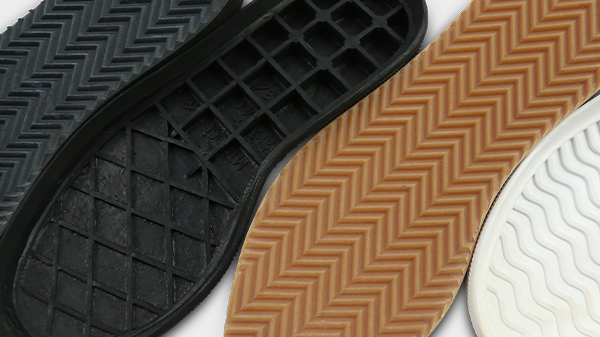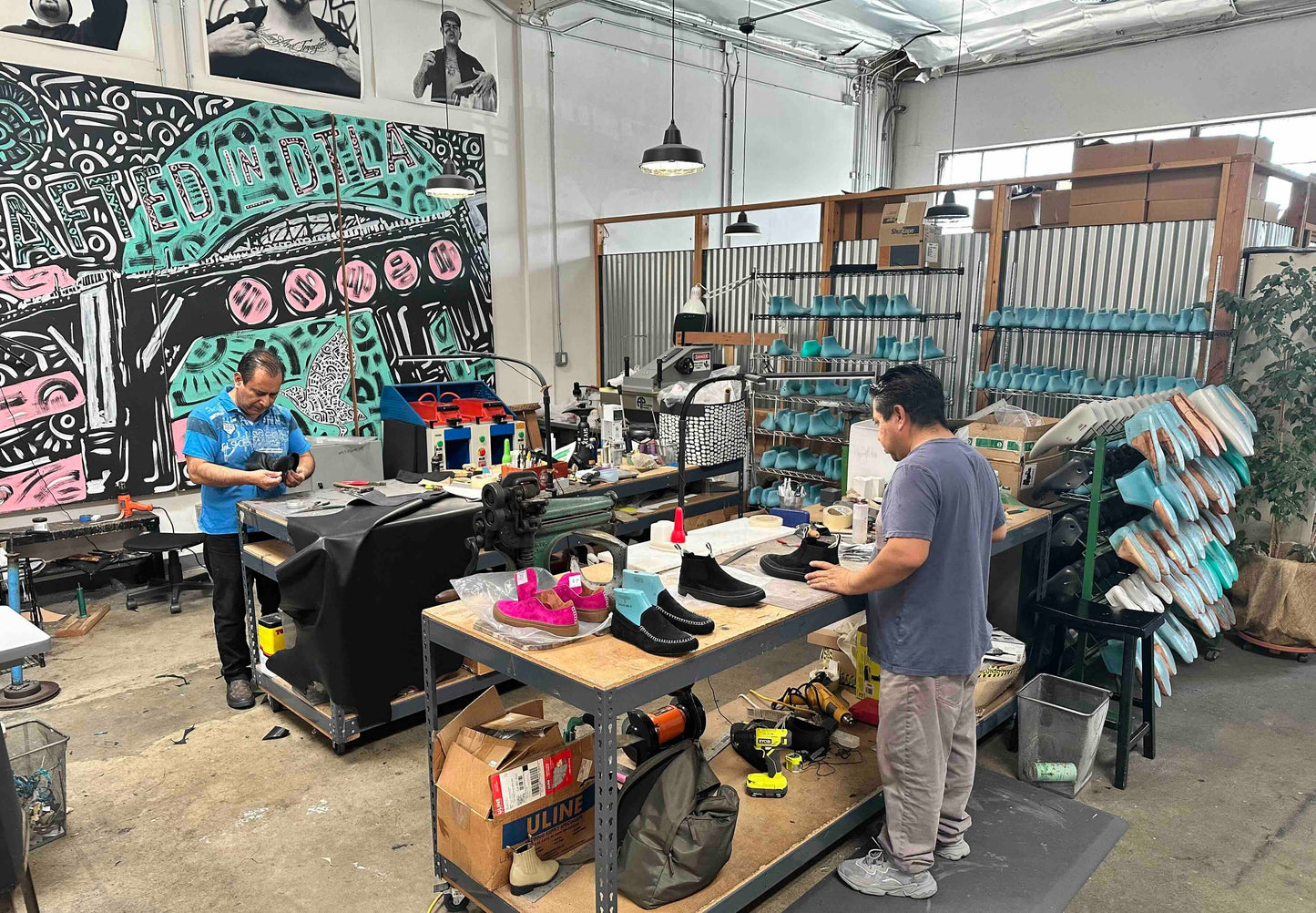
Soles are the fundamental part of shoes. They protect the bottom of the wearers’ feet and ensure they do not develop severe pain afterward.
Wearing shoes without soles is similar to walking barefoot. Imagine yourself barefoot running with nothing to protect your feet. Tragic, right? You are likely to end up with bruises and other ailments. There are many different shoe materials available out there. You must know essential details about them to make informed decisions on materials to use for soles for your shoes. Selecting the best materials plays a significant role in ensuring comfort, functionality, and durability.
Soles of shoes are made from different materials because different types of shoes need different soles. For instance, the sole of hiking boots or running shoes cannot be the same as ballet shoes because they perform different functions.
This article will discuss everything you need to know about the different materials for the soles of shoes and what they are best suited for. Let’s dive in.
The different types of soles
Rubber soles
Natural rubber has been used to make soles for hundreds of years. Currently, manufacturers in the footwear industry have supplemented natural rubber with various rubber compounds and synthetic rubber. Rubber soles are very durable. They can be worn in any weather. The best part is that the soles are water-resistant, so you never have to worry about water seeping into your shoes on those rainy days.
Rubber soles are ideal for winter boots, hiking boots, and work boots (for those whose jobs demand that they work in water for long hours). They give boots a rather casual look since they are much thicker than other soles. The main disadvantage with rubber soles is that they tend to crack when worn regularly for an extended period.
Leather soles
Compared to all the other types of soles, leather soles are long-lasting and heavy-duty. They can withstand harsh conditions as long as they are properly maintained.
Another advantage is that they are breathable. Therefore, your feet don’t sweat when you are wearing leather shoes. Leather soles can also take up the foot shape of the wearer. These soles are ideal for formal shoes.
Ridgeway soles
Ridgeway soles are a variation of rubber shoes. As the name suggests, the soles have ridge channels and protruding lugs that give the wearer stability and traction. Just like rubber soles, ridgeway soles are durable and can be worn in any environment, including places with harsh weather conditions. They are also lightweight, which is an added advantage.
Combination soles
Combination soles are made of two materials; leather and rubber. The entire sole is leather, but manufacturers attach the rubber to the heel and the front part of the shoe. The rubber makes the shoe durable. Additionally, it offers better traction. These soles are ideal for dress shoes.
Wedge soles
Wedge soles are known for their spongy feel. Instead of a heel, the sole has a wedge that gradually becomes smaller towards the end. Wedge soles are non-slip in nature and have good traction. The downside with them is that they are not durable and get damaged easily. Manufacturers use wedge soles in both heritage-style boots and work boots.
Commando soles
Commando soles are known for their weather resistance, thanks to their thick lugs and rugged profile. The thick lugs give shoes traction and grip. Commando soles are thick and heavy, so shoes with this type of soles are clunkier. If you want lighter shoes, use a different kind of sole. These soles are pretty popular and are ideal for work shoes and hiking boots.
Vibram soles
Vibram® sole is not necessarily a sole type. It is a brand. They made a debut in the 1930s and are named after Vitale Brahmani, an alpine mountain climber and founder of the company that manufactures Vibram soles. Focusing on foot health, Vibram soles are durable, slip-resistant, and waterproof. They are ideal for walking and hiking shoes.
Dainite soles
Dainite soles have been around for centuries. Just like ridgeway soles, dainite soles are a variation of rubber soles. They have a distinctive pattern with round recessed lugs. The lugs ensure that mud and stones don’t get stuck on the shoe sole.
Shoes with dainite soles are very comfortable and durable. Most of them are thin and give shoes a more low-profile look. The main disadvantage with dianite soles is that they do not have enough grip, especially if one walks on mud terrain. These soles are ideal for dress shoes.
Cork Nitrile Soles
These soles are made from two materials; cork and rubber. Cork nitrile soles are as durable as rubber soles, and the best part is that they are not as heavy.
They are very comfortable and are oil resistant. The downside with these soles is that they don’t have tread. Therefore, they can’t be worn in slippery conditions. Cork Nitrile soles are ideal for day-to-day wear.
Crepe Soles
Crepe soles are made from natural latex “Crepe” rubber. They are known for their comfort and good-looking appearance. The comfort is a result of increased protection at the mid foot. The downside with crepe soles is that they are heavy.
The material is also open-pore in nature, making it hard to remove any dirt or dust trapped in the sole. Crepe soles are ideal for modern boots.
Camp soles
These soles are made from rubber. They are water-resistant and are very lightweight. Considering they are made of rubber, they offer an excellent grip. These soles are ideal for casual wear boots.
Lug soles
Just like camp soles, lug soles are made of rubber. The soles are quite chunky, and they have a fantastic grip. The disadvantage of lug soles is that they accumulate a lot of dirt and therefore need regular cleaning. These soles are ideal for utility boots and hiking boots.
Polyurethane soles
These soles are made from an organic polymer material. They have long-term mechanical properties. Additionally, they are durable, slip-resistant, have shock absorption properties, and are water-resistant. They are also low density and affordable. These soles are ideal for walking shoes, jogging shoes, and safety shoes.
Raw Cord
The lack of rubber during World War 2 led to the invention of raw cord soles. Manufacturers made them from old car tires. These soles can withstand harsh weather conditions and are durable. However, very few manufacturers make them these days.
ABS soles
Acrylonitrile Butadiene Styrene (ABS) soles have recently become popular because of their unique characteristics. They are durable, tough, have abrasion resistance, increased stability, and offer easy molding. If you want shoes to last long-term, use ABS soles. The downside with these soles is that they have poor weather resistance, i.e., they cannot withstand maximal heat or cold. They are not ideal for outside settings.
TRP soles
TRP soles are made from thermoplastic rubber. Manufacturers make thermoplastic rubber by molding and compounding rubber granules from raw materials that are in solid form. These soles are famous for their excellent shock absorption and slip resistance. The downside is that they are not very comfortable. TRP soles are ideal for the outdoors.
EVA soles
Ethylene Vinyl Acetate (EVA) soles have shock-absorbing properties. The sole is a natural shock absorber. This explains why most brands use them on their shoes. Additionally, they are incredibly flexible and lightweight. The soles are also elastic. These soles are ideal for work shoes.
PVC soles
PVC soles are popular for their insulation properties. They are cost-effective and are a cheaper alternative to leather as they offer the same properties. Just like leather, PVC soles can be molded into different shapes. These soles are ideal for work shoes.
BPU Soles
These soles are made from improved polyurethane materials that are environmentally friendly. They are one of the toughest soles out there and have great weather resistance. Additionally, they have very low density. These soles are ideal for people who spend most of their time outside in the elements.
Conclusion
Notably, all the soles we have discussed above have advantages and disadvantages. Each sole is unique in its way, so you must understand the positives and negatives before making a purchase.






Is it possible to find a shoe repair shop that could add a leather sole to my athletic type walking shoe which has rubber ? I am an avid dancer and most shoes start hurting after one – and a half hours. The athletic shoes never cause pain and I wish I could wear dancing but one really wants a sole that ‘slides ‘ well !!
Hello, I am having custom shoes due to my 6E width and high arch, supination and underpronation which are the same. I am looking for a sole which will be most comfortable ? There are alot to choose from. Vibram rubber mini lug or EVA. Leather, Deer skin vs nubuck ? Insoles or inserts made from plastazote and poron. How thick? If you can help? Thanks. The best to you, Mike Kaplan